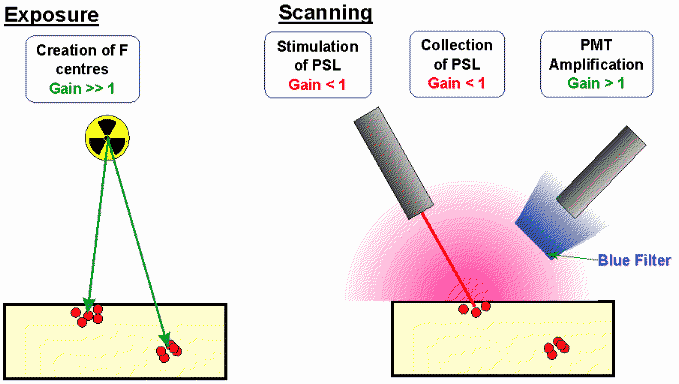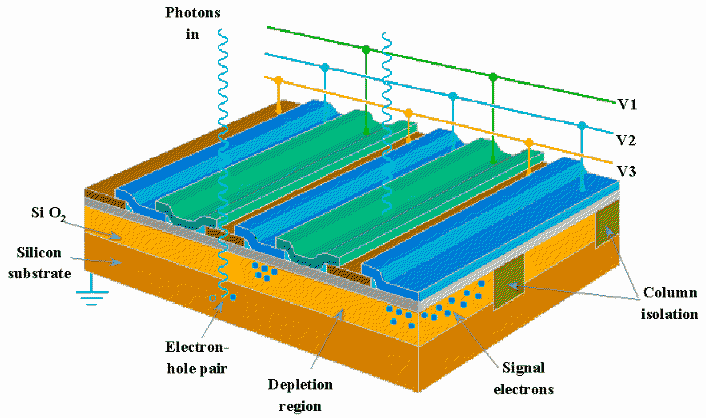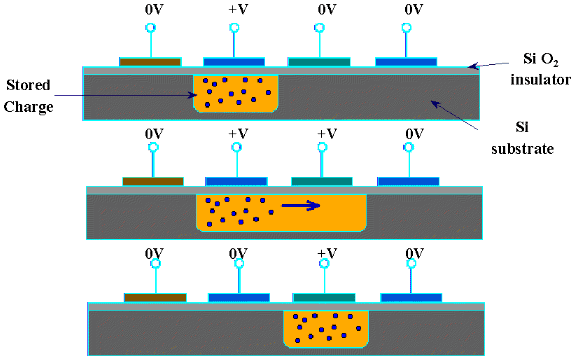 |
Detectors
II. Area Detectors |
 |
Detectors
II. Area Detectors |
Area Detectors
X-ray film
Obviously this is the detector with the oldest history of all: It works by the incoming photon dissociating a silver halide grain in the photographic emulsion with silver precipitating out. It usually takes several photons within a time period to activate a grain. The photographic development is the slowest part of the process, so the modes are clearly indirect and integrating. The energy discrimination is virtually zero and the dynamic range is usually <200. The main advantages are the very low cost and the many years of past experience and development.
Image Plate systems
These have been one of the revolutions of the last 10 - 15 years, being originally a Japanese discovery. One might view image plates as the modern day equivalent of photographic film but with its worst features removed. Image plates consist of Eu-doped phosphor powder on plastic sheet, the Eu2+ becoming excited to Eu3+ by an incoming X-ray photon. They remain in this state until read out by a red laser when the Eu3+ loses an electron by a two-stage process, one of which emits detectable light with an intensity proportional to the incident X-ray flux. The basic process is illustrated below:
 | |
| PMT | = Photo-multiplier Tube |
| PSL | = Photo Stimulated Luminescence |
The plastic image plate is relatively cheap and can be re-used many times. However the more expensive and slow part of the process is the "laser reading" of the image which is done typically in 1 - 10 minutes. The dynamic range is around 103−104, distinctly better than photographic film, though the energy discrimination is poor.
CCD's
These refer to charge-coupled devices since the basic principle of operation is that an incoming X-ray photon creates electron-hole pairs (i.e. the Charge) in one of a multiple array of silicon units (in a wafer) which reside in place locally until "read out" using an ingenious voltage sweeping sequence applied to the surface anodes; the basic action is illustrated in the next 3 figures:



However they are not always used in this direct way but can be used with an intermediate optical stage (scintillator + fibre optics + lenses) which increases the signal and improves saturation effects. The dynamic range is fairly good, 103−104, and they operate at high counting/integrating rates usually in the indirect mode. The chief drawbacks are size (they are very small) and expense.
|
© Copyright 1997-2006.
Birkbeck College, University of London.
|
Author(s):
Paul Barnes Martin Vickers Rob Lewis |